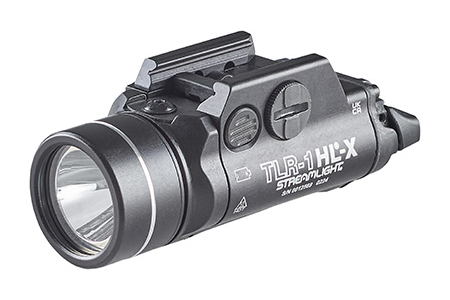Effective fire detection and suppression is now top of the agenda for turbine manufacturers and wind farm operators, as they become acutely aware of the financial implications, safety issues and environmental impact of fire-damaged or destroyed turbines.
With Governments across the globe becoming ever more aware of the environmental benefits of wind-generated power, the number of wind farms and the financial investment in constructing, erecting and maintaining wind turbines is increasing exponentially.
Such a high level of investment, coupled with the increased dependence on wind power, has led turbine manufacturers and operators to become acutely aware of the financial implications, safety issues and environmental impact of fire-damaged or destroyed turbines. Indeed, fire safety has become such an issue that the USA’s NFPA [National Fire Protection Association], Germany’s VdS [Vertrauen durch Sicherheit] and Germanischer Lloyd have developed recommendations or codes of practice in the protection of wind turbines.
The NFPA added wind turbine and out -building fire protection standards to NFPA 850 [Recommended Practice for Fire Protection for Electric Generating Plants and High Voltage Direct Current Converter Stations, 2010 Edition]. This document provides fire protection recommendations for the safety of construction and operating personnel, physical integrity of plant components and the continuity of plant operations. The revised 2010 edition includes detailed recommendations relating to wind turbine generating facilities.
VdS 3523en [Wind turbines, Fire protection guideline] has also been used as the basis for the CFPA E [Confederation of Fire Protection Associations in Europe] Guideline No 21.2010 F, which addresses the same topic. VdS is a highly-regarded, independent, international, third-party accreditation and certification body for fire prevention and safety technology. Germanischer Lloyd, which specialises in classifications for the maritime and energy industries, has developed Renewables Certification Guidelines [GL Wind Technical Note Certification of Fire Protection Systems for Wind Turbines and the newest Revision will be released early 2015].
Turbine fire risk
The almost inevitable consequence of these industry initiativeshas been that a number of detection and suppression systems have been put forward as suitable solutions. While many are effective for what might be regarded as “conventional” applications, they may not be suitable for the particular fire challenges found in wind turbines.
The majority of turbine fires are started by a lightning strike, brought about by their exposed and often high-altitude location and the height of the structure; turbines are now being built that are up to 350 feet [100 meters] high. Mechanical failure or electrical malfunction are the second leading cause of fire in wind turbines. Capacitors, transformers, generators, electrical controls and transmission equipment, all have the potential to catch fire, as do SCADA [Supervisory Control and Data Acquisition] systems. There is also the risk of fire due to loose or broken electrical connections or the overloading of electrical circuits.
Unique fire protection challenge
What are the special challenges that an effective fire detection and suppression system for a wind turbine has to overcome?
The core issue is, of course, remoteness. This is particularly the case with off-shore wind farms, but even on-shore farms are routinely in difficult to access or isolated locations. The essential characteristics of an effective wind turbine fire detection and suppression system are that it should:
Deliver around-the-clock reliability and 24/7 unsupervised protection
Ensure an absence of false alarms
Contend with vibration, dust, debris and airflow through the nacelle
Contend with extreme temperature variations
Stop a fire precisely where it breaks out and before it takes hold
Require no external power
The options that are often considered can be generally categorised as:
Air sampling detection
Watermist suppression
Compressed-air foam suppression
Fusible link detection and suppression
Total flooding CO2 [carbon dioxide] suppression
Total flooding clean agent suppression
Linear pneumatic detection and suppression
Air sampling aims to offer early detection by collecting minute smoke particulates in the early stage of fire, but they do require a power source and control panel, which means that the system will fail if the external power or battery backup fails. These systems are also expensive, in part because they only detect a fire, and so need to be integrated with a suppression system.
The major drawback to air sampling in wind turbines though is the ever-present risk of false alarms. These can be caused by tiny particles of dust and debris and atmospheric pollution that are propelled around the nacelle due to the turbine housing having a number of openings to allow air to circulate to reduce the internal temperature. While false alarms are the bane of any system owner’s life, a false alarm in a wind turbine inevitably involves extensive travel and possibly the hiring of expensive specialist access equipment.
Suppression-only systems
Water mist suppression systems convert water into a fine atomised mist, but they too have limitations when used to protect wind turbines.
Due to the turbine’s remote location and the distance from the ground to the nacelle, water mist systems are often impractical, plus they call for considerable space to be devoted to water storage, which increases the weight in the nacelle. These systems are also a costly part-solution to the problem, as they need to be linked to a detection system.
Water mist systems are total flooding solutions, which increase the potential for damage to electrical components and possible corrosion. Also, because in some locations the temperature can fall below freezing point, antifreeze has to be added to the water, and antifreeze is a combustible liquid that is itself a corrosive substance.
Compressed air foam systems work on the principle that compressed air is injected into a foam solution to achieve a quicker fire knockdown when compared with conventional foam systems. While they need less water than conventional systems, the storage, weight and freeze-protection problems are similar to those of water mist systems. In addition, these systems require considerable extra space for the operating components. After discharge, clean-up can be extensive and, like water mist systems, the cost is increased by the need for a separate detection system.
Fusible link systems do however combine detection and suppression into one package and work on the basis that heat from a fire will rupture a fusible link – the detection element – that in turn will initiate the discharge of the suppressant. The challenge with these systems is that airflow in the nacelle can seriously impair performance and reliability because heat and flame that typically rise from the source of a fire may be propelled away from the location of the fusible link, critically delaying activation.
Total flooding gaseous systems
Whether using CO2 or the latest clean gaseous agents, traditional total flooding suppression systems are designed to fill the entire space being protected with suppressant.
CO2, while an established suppression agent, is not without its drawbacks. It is unsuitable for total flooding applications in potentially occupied enclosures, as its discharge in fire extinguishing concentrations would be lethal to occupants. = Flooded areas must be adequately ventilated after discharge to prevent accidental exposure of personnel to dangerous levels of CO2 when investigating the cause of a discharge.
However, these challenges do not exist with clean agents, such as 3M™ Novec™ 1230 Fire Protection Fluid. The suppressant is stored as a low-vapour-pressure fluid that, when discharged, vaporises into a colorless and odorless gas. Typical total flooding applications use a concentration of the fluid that is well below the agent’s saturation or condensation level and its low design concentration means that less space has to be devoted to cylinder storage. Novec 1230 has a negligible impact on the environment, with insignificant global warming potential, zero ozone depletion and an atmospheric lifetime of between just five days. Once discharged, it leaves nothing behind to damage sensitive electronic equipment.
Traditional total flooding systems are not without any downsides. Vibration can loosen connections, while dirt, dust and temperature extremes are known to cause unwarranted discharge. Additionally, openings in the turbine housing significantly inhibit achieving the designated agent concentration. Devising a solution to overcome these challenges can add significantly to the weight in the turbine.
Integrated detection and suppression
The major drawbacks of traditional total flooding suppression systems, and the shortcomings of other technologies put forward for the protection of wind turbines, are overcome in the FIRETRACE® linear pneumatic system that provides both fire detection and suppression in a single package.
It is a self-contained system that, significantly, requires neither electricity nor external power; a solution that is activated automatically around-the-clock without the need for manual activation or monitoring, and requires virtually no maintenance. It is an intrinsically safe solution, as it does not contain any components that produce sparks or which can hold enough energy to produce a spark of sufficient energy to cause an ignition.
FIRETRACE comprises a cylinder that, for wind turbine applications contains 3M Novec 1230, that is attached to a purpose-designed proprietary linear pneumatic Firetrace detection tube. This leak-resistant polymer tubing is a heat and flame detector that is designed to deliver fire suppression agent to the source of the fire. It is routed throughout an electrical cabinet or other areas of the turbine including transformer, brake, or hydraulic unit. When the tubing is exposed to heat and radiant energy from a fire, it ruptures and instantly directs the suppression to the source of the fire via the tubing or strategically placed discharge nozzles.
A key factor in its success – there are over 250,000 FIRETRACE systems installed around the world – is the system’s reliability. The fact is that the only thing that will rupture the tube is heat or flame from a fire, so there is no prospect of false alarms; yet, if a fire breaks out, the response is unerringly immediate and accurately targeted. It is the only UL [Underwriters Laboratories] listed, FM [Factory Mutual] approved and CE [Conformité Européene or European Conformity] marked tube-operated system in the world that is tested as an automatic fire detection and suppression system.
www.firetrace.com











